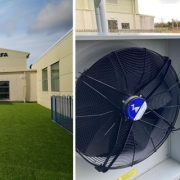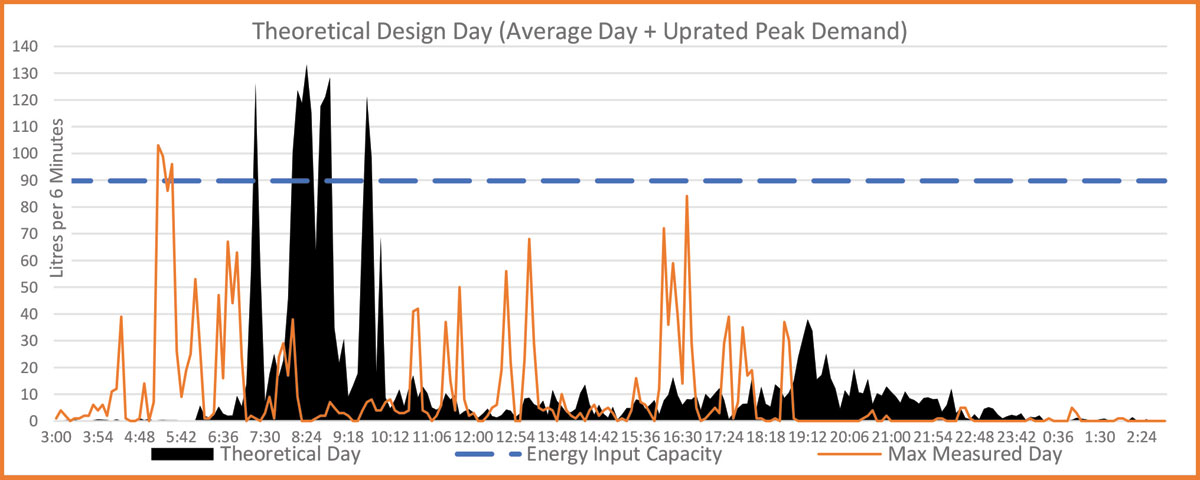Ysgol Tir Morfa Community School in Rhyl, North Wales, is an additional learning needs school for boys and girls aged from 3 to 18. The school is split across three areas, with the newest part now being heated by two Ideal Heating 32kW ECOMOD monobloc air source commercial heat pumps.
Becoming carbon neutral
In 2019, Denbighshire County Council voted to become a carbon neutral council by 2030. The council identified that in the financial year 2021/22, its own buildings accounted for 62% of direct corporate carbon emissions. As a result, it has been assessing all its properties for opportunities to decrease carbon emissions, with a move away from fossil fuel based heating being a top priority.
As a relatively new build with underfloor heating already in place, Ysgol Tir Morfa was identified as a property that could easily transition to heat pumps. As installer Gareth O’Loughlin of GGS Heating comments: “When it comes to putting in the air source heat pumps, it’s just a straight conversion; there’s no heating alterations. It’ll work at the temperatures designed with the system that we’ve got.”
ECOMOD Heat Pumps
Two Ideal Heating 32kW ECOMOD monobloc air source heat pumps have been installed immediately outside the boiler house running in cascade into a 500 litre buffer.
Heat pumps, which utilise the free energy in the air to heat water, have many benefits including an efficiency of up to 400% which is more than traditional boilers, and zero local carbon emissions.
The ECOMOD air source heat pumps come with a minimum A++ Energy related Products (ErP) efficiency rating and high co-efficient of performance (COP) rating of up to 4.85. R32 refrigerant ensures a low global warming potential (GWP).
Offsetting costs with renewables
Denbighshire County Council’ Property Section Energy Team is responsible for the work to reduce carbon emissions from council buildings, as well as increasing the amount of renewable energy installed in Denbighshire.
When the team looked in-depth at heat pumps, they understood that the unit cost of electricity is more expensive than gas, but knew they could offset this with renewable energy, to make it a lot more economical. As a result, two separate solar photovoltaic arrays (solar PV) have been installed at the school along with a 10.2kW solar PV battery to store any excess generation.
Upskilling
As part of the support offered to Denbighshire County Council for this installation, Ideal Heating is providing local company GGS Heating with training to enable them to successfully install heat pumps, thus upskilling the local supply chain.
Gareth O’Loughlin of GGS Heating has been pleasantly surprised by just how easy it has proven:
“Installing the ECOMOD heat pumps has been generally no different to installing the system with gas boilers. They both work in generally the same way. It’s just how the heat is derived that’s the difference from the gas. I’d definitely recommend Ideal products and their commercial side of it especially. We’ve had nothing but help. We’ve always found them easy to work with and the technical teams helpful.”
Reduced carbon emissions and more
Denbighshire County Council is pleased with the new heating system in operation at Ysgol Tir Morfa, which takes them one step further forward in their journey to become carbon neutral.
Cllr Barry Mellor, Lead Member for Environment and Transport at Denbighshire County Council is enthusiastic over the project:
“It’s been absolutely brilliant. I hadn’t seen heat pumps before. Seeing them work here, knowing that this is going to give us heating for the school, and being able to store the electricity from the roof so it doesn’t go to the grid, it is ideal.”
CLICK HERE TO LEARN MORE ABOUT THE ECOMOD
MODBLOCK AIR SOURCE COMMERCIAL HEAT PUMPS



